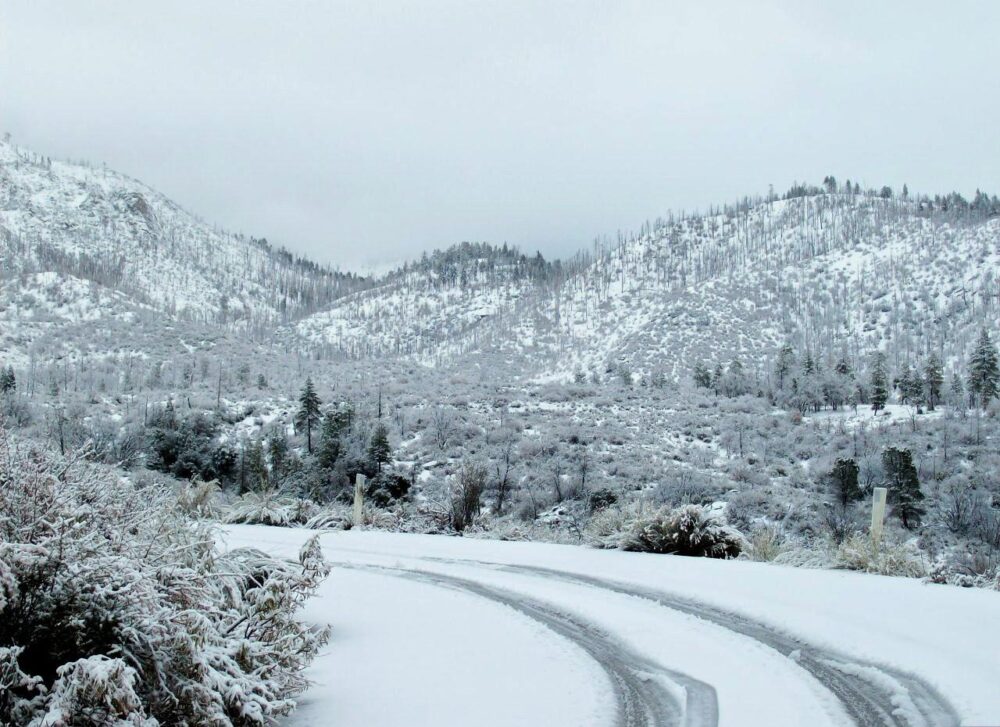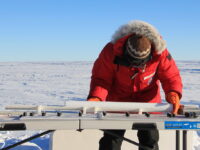New York City typically turns into a snow globe by mid-December, gracing its residents with a white Christmas, but not this season. Setting a record for the longest wait for snowfall since 1869, the first flurries came to the Big Apple on February 1, 2023. The overnight dusting covered the city with 0.4 inches of snow. The last winter with a snow drought this severe was half a century ago in 1973, when the city saw its first snowfall on January 29, 1973. It brought 2.8 inches in total, 14 inches less than the city’s average. This year’s 329-day stretch, from March 9 to February 1, beats 1973’s record for the longest time without snowfall. Instead of snow, Central Park saw rain and flowers blooming through the month of January. New York wasn’t alone. Much of New England has experienced a warmer, rainier winter this year. Why is this year such an anomaly? A combination of factors is responsible.
First, climate change is increasing average temperatures across the globe, though it does not impact each season equally. Over the past 30 years, the average winter temperature has increased by a full degree Fahrenheit, which is significantly more than any other season. In fact, winter is warming three times faster than summer. Higher winter temperatures, naturally, mean less snow.
This year’s specific La Niña conditions have brought the very real effects of global warming to light
Global warming causes not only droughts but extreme weather events like hurricanes and blizzards. The warmer atmosphere holds more water vapor and without colder air to condense the vapor, this moisture will remain in the sky and the land will stay dry. Sometimes this dryness lasts for extended periods of time as seen with California’s drought — for the past few years, California has battled its hottest and driest weather on record. On the other hand, when cooler air does arrive in the humid region, the vapor may condense and fall all at once as severe rain or snow.
Much of New England has experienced a warmer, rainier winter this year.
The jet stream, a wind path that travels from the Pacific Ocean across the US to the east coast, aids in bringing warm, moist air together with cold air to create storms.
October 2022 through January 2023 have been some of the warmest winter months to date, but there have been several days where temperatures plummeted 20 degrees below average. Sporadic freezing temperatures, however, aren’t sufficient to produce snowstorms. The development of snowstorms relies on cold and warm air colliding. The jet stream, a wind path that travels from the Pacific Ocean across the U.S. to the east coast, aids in bringing warm, moist air together with cold air to create storms. A disruption to this global wind pattern called “La Niña” is contributing to this year’s lack of snow. The phenomenon occurs around every seven years, though there is no regular schedule. Due to the Earth’s rotation, trade winds normally blow from east to west at the equator. During La Niña, these winds are stronger than usual, which causes a chain reaction that ultimately moves the jet stream further north. It is described as the “polar jet stream” when in this location.
The polar jet stream comes down from Alaska and turns east, passing through New York. It divides colder and wetter weather on its northern side from warmer and dryer weather on its southern side. It also acts as a route for storms to follow. New York City happens to fall south of this stream during this year’s La Niña conditions. Thus, it has experienced dryer, warmer weather and has avoided winter storms that pass north of the city following the polar jet stream.
Setting a record for the longest wait for snowfall since 1869, the first flurries came to the Big Apple on February 1, 2023.
It seems as though this year’s specific La Niña conditions have brought the very real effects of global warming to light — serving as yet another reminder of the climate crisis. Despite the uninspiring start to NYC’s winter, the city typically receives half of its snowfall after February 1, so there is still hope for the snowman population to grow before spring.
Image courtesy of Wikimedia Commons



